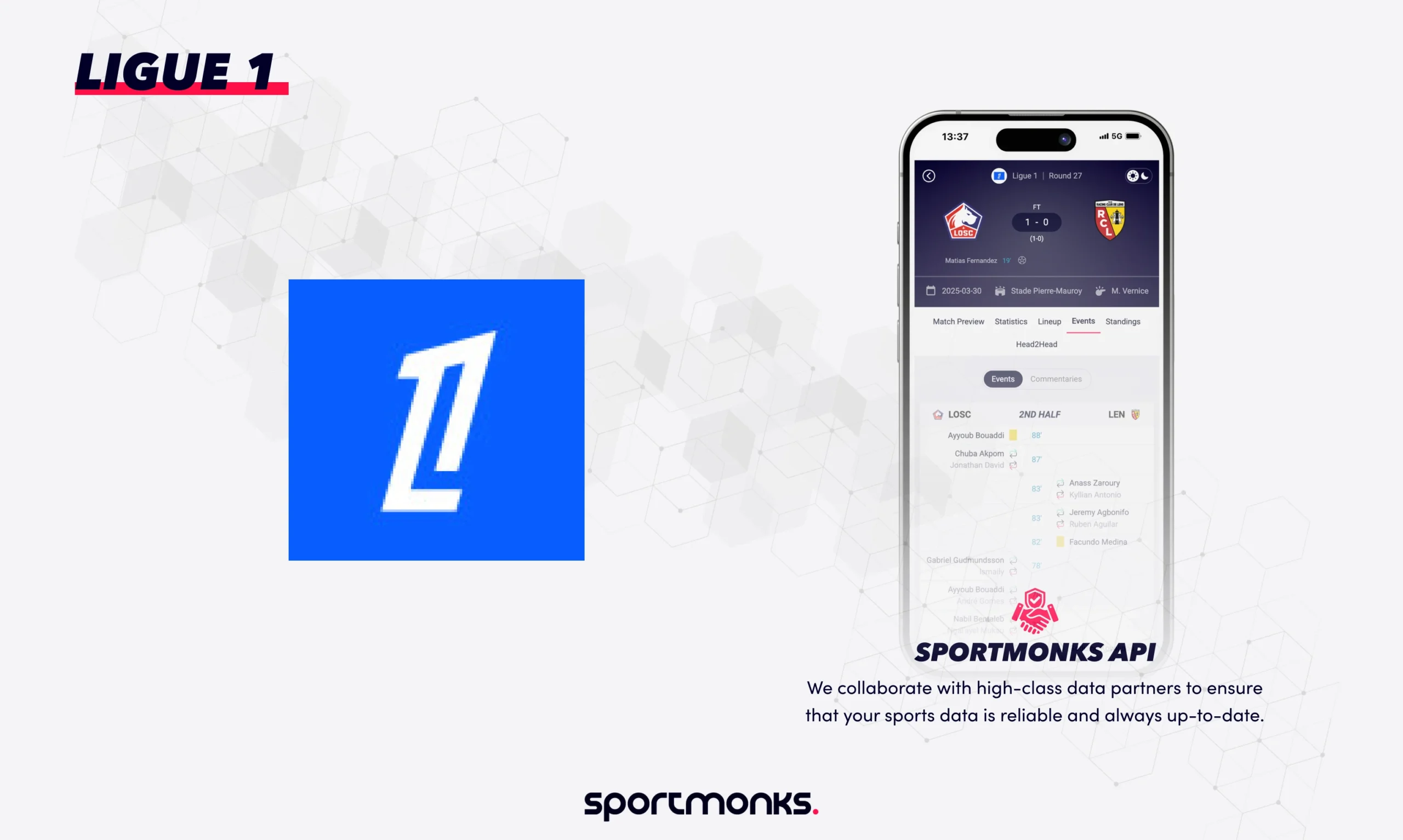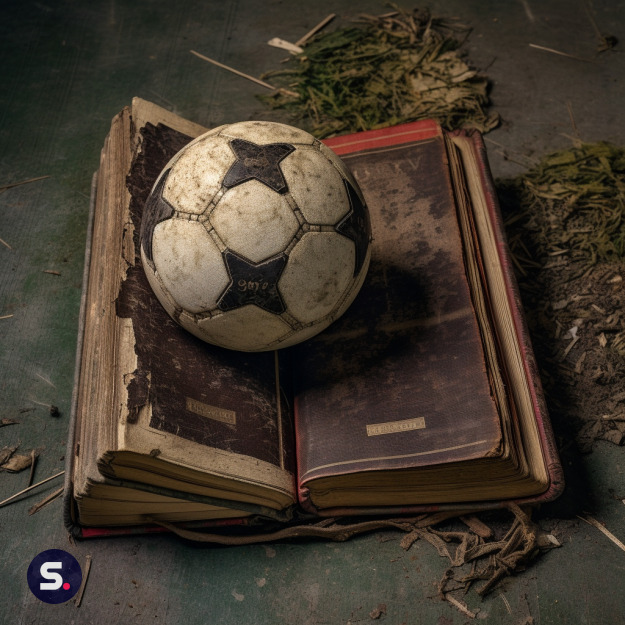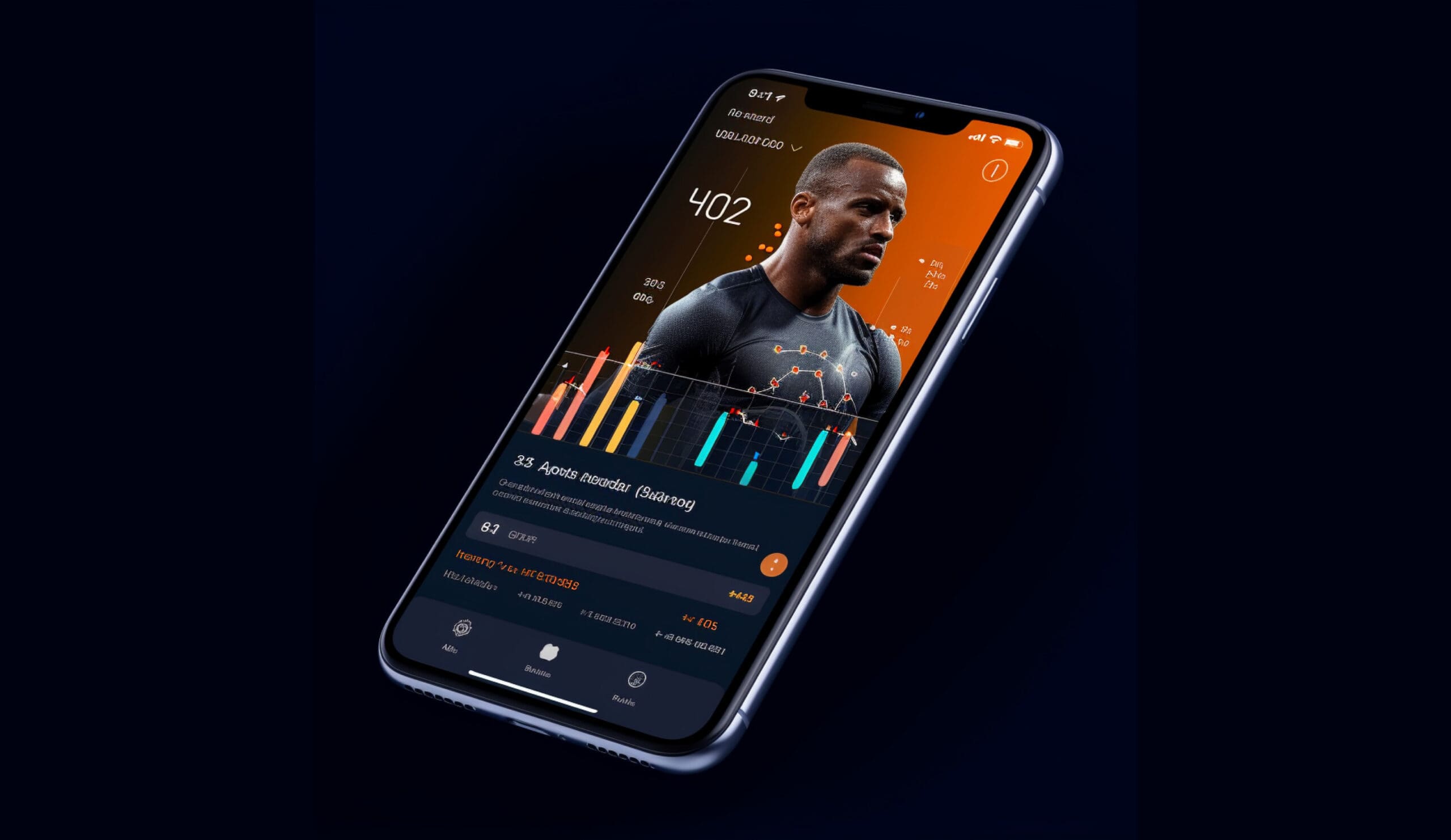
Contents
History of Ligue 1
Organised football in France began in the late 19th century, but the professional league, as we know it today, was established in 1932. Before this, various amateur and regional competitions were the norm. The creation of a national professional league marked a significant step in the development of French football.
Key milestones in Ligue 1’s history
– 1932: The first season of the French professional league, then known as Division 1, is played. Olympique Lillois wins the inaugural title.
– 1939-1945: World War II disrupts the league, with play being suspended during these years.
– 1945: The league resumes after the war.
– 1950s: Stade de Reims emerges as a dominant force, featuring players like Raymond Kopa and Just Fontaine.
– 1960s and 1970s: Saint-Étienne enjoys a period of significant success, both domestically and in European competitions.
– 1990s: Olympique de Marseille wins the UEFA Champions League in 1993, becoming the first (and so far only) French club to achieve this feat.
– 2000s: Olympique Lyonnais dominates Ligue 1, winning seven consecutive titles from 2002 to 2008.
– 2010s: Paris Saint-Germain (PSG) becomes a dominant force following significant investment from Qatar Sports Investments.
Structure and format of Ligue 1
Ligue 1 consists of 20 clubs that compete in a double round-robin format. This means each team plays every other team twice during the season—once at their home stadium and once at their opponent’s stadium—for a total of 38 matches. The season typically runs from August to May.
– Points system: Teams earn 3 points for a win, 1 point for a draw, and 0 points for a loss.
– League table: Teams are ranked in a league table based on their accumulated points. Tie-breakers, in order, are: goal difference, goals scored, head-to-head results, head-to-head goal difference, head-to-head, away goals scored, total away goals scored, fair play ranking
– European competitions qualification: The top three teams in Ligue 1 qualify for the UEFA Champions League group stage. The fourth-placed team qualifies for the UEFA Champions League qualifying rounds. The fifth-placed team qualifies for the UEFA Europa League group stage. The Coupe de France (French domestic cup) winner also qualifies for the Europa League group stage. If the Coupe de France winner has already qualified for the Champions League, the Europa League group stage spot goes to the next best placed team in the league. The sixth-placed team qualifies for the UEFA Europa Conference League Play-off round.
– Relegation: The bottom two teams in the league table at the end of the season suffer direct relegation to Ligue 2 (the second tier of French football). The team finishing 18th enters a two-legged relegation playoff against the winner of the Ligue 2 play-off to determine the final spot in the following Ligue 1 season.
Prominent Ligue 1 teams
Ligue 1 has indeed seen periods of dominance by certain clubs, earning it the nickname ‘farmers league‘ from some critics. However, this label overlooks the fact that the league remains competitive. There’s still plenty of fight left in several teams, with many clubs capable of challenging for the top spots and making significant impacts both domestically and in European competitions.
– Paris Saint-Germain (PSG): In recent years, PSG has become the dominant force in French football, largely due to significant financial investment. They have won Ligue 1 eleven times, with most of those league titles coming in the last decade. Known for their star-studded squads and attacking style, PSG is a major player on the European stage.
– AS Saint-Étienne: Historically one of the most successful clubs in France, Saint-Étienne dominated French football in the 1960s and 1970s, winning Ligue 1 ten times. While they haven’t achieved the same level of success in recent decades, they remain a historically important club with a passionate fanbase.
– Olympique de Marseille: The only French club to have won the UEFA Champions League (in 1993), Olympique de Marseille has also won Ligue 1 nine times. They are known for their passionate supporters and their strong rivalry with PSG, known as Le Classique.
– Olympique Lyonnais: Lyon enjoyed a period of sustained dominance in the 2000s, winning seven consecutive Ligue 1 titles from 2002 to 2008. They are known for their strong youth academy and have produced many talented players. Some notable alumni include Karim Benzema, who became a star at Real Madrid, Alexandre Lacazette, the former Arsenal talisman.
– FC Nantes: Nantes has won Ligue 1 eight times and is known for its distinctive style of play (jeu à la nantais), often emphasizing possession and attacking football.
– AS Monaco: Monaco has won Ligue 1 eight times and is known for its glamorous image and attracting talented young players including Kylian Mbappé, who burst onto the global stage from Monaco before moving to Paris Saint-Germain, and Thierry Henry, who would go on to become one of Arsenal’s greatest players.
Famous players in Ligue 1
Ligue 1 has been a stage for numerous talented footballers, both French and international, who have left a lasting impact on the league and the sport. From legendary figures who defined eras to current stars captivating audiences, these players have contributed significantly to Ligue 1’s appeal.
Iconic players from the past
– Michel Platini (AS Nancy, Saint-Étienne): One of the greatest midfielders of all time, Platini was known for his exceptional passing, vision, and free-kick ability. He played for AS Nancy and Saint-Étienne before achieving greater fame at Juventus. His influence on the game was profound, winning three Ballon d’Or awards in a row.
– Zinedine Zidane (Bordeaux): Before becoming a global superstar at Juventus and Real Madrid, Zidane played for Bordeaux in Ligue 1, showcasing his incredible skill and potential. His elegance, creativity, and flair made him one of the most admired players in football history.
– Raymond Kopa (Stade de Reims): A highly skilled attacking midfielder, Kopa was one of the first French players to achieve international fame. He played for Stade de Reims and Real Madrid, winning numerous titles. His technical ability and vision were ahead of his time.
– Just Fontaine (Stade de Reims): A prolific goalscorer, Fontaine holds the record for most goals scored in a single FIFA World Cup tournament (13 in 1958). He was a key player for Stade de Reims during their successful period in the 1950s, known for his sharp finishing and movement.
– Jean-Pierre Papin (Olympique de Marseille): A prolific striker, Papin was known for his acrobatic goals and finishing ability. He was a key player for Olympique de Marseille during their successful period in the late 1980s and early 1990s, leading them to a European Cup victory.
– Didier Drogba (Olympique de Marseille): A powerful and prolific striker, Drogba had a successful spell at Olympique de Marseille before moving to Chelsea, where he became a legend. His physical presence and goal-scoring prowess made him a formidable opponent.
– Juninho (Lyon): Known as “Juninho Pernambucano,” he was famous for his exceptional set-piece abilities, particularly his free-kicks. He played a pivotal role in Lyon’s seven consecutive Ligue 1 titles, providing creativity and goals from midfield.
– Thiago Silva (Paris Saint-Germain): An intelligent and commanding defender, Silva was instrumental in PSG’s dominance in Ligue 1. Known for his leadership, tactical acumen, and ball-playing abilities, he’s considered one of the best centre-backs of his generation.
– Neymar Jr. (Paris Saint-Germain): A global superstar known for his mesmerizing dribbling, creativity, and flair, Neymar broke the world transfer record when he moved from Barcelona to PSG for €222 million in 2017. His time at PSG was marked by significant contributions to their domestic success, although it was also controversial due to injuries and high expectations.
– Zlatan Ibrahimović (Paris Saint-Germain): Renowned for his strength, versatility, and spectacular goals, Zlatan was a key figure in PSG’s early 2010s dominance, where he scored prolifically and led the team to multiple Ligue 1 titles.
– Kylian Mbappé (Monaco, Paris Saint-Germain): An explosive talent, Mbappé’s early career at Monaco showcased his speed, finishing, and potential. His move from Monaco to PSG in 2018 involved a transfer fee of €180 million, making him the second most expensive transfer at the time and the most expensive teenager of all time. He continued to break records and win numerous titles at PSG before moving to Real Madrid on a free transfer in 2024, where he fulfilled a long-standing dream to play for the Spanish club.
Current stars
– Marquinhos (Paris Saint-Germain): A versatile and reliable defender, Marquinhos has been the backbone of PSG’s defence, known for his leadership, positional sense, and ability to play both as a center-back and a defensive midfielder.
– Achraf Hakimi (Paris Saint-Germain): A dynamic right-back with an attacking flair, Hakimi has added speed and creativity to PSG’s right flank, known for his overlapping runs and precise crosses.
– Gianluigi Donnarumma (Paris Saint-Germain): One of the world’s best goalkeepers even from his teen years, Donnarumma moved to PSG bringing his height, agility, and shot-stopping prowess, significantly improving the team’s defensive solidity.
– Nuno Mendes (Paris Saint-Germain): A promising young left-back, Mendes has shown great potential with his defensive skills and ability to contribute in attack, making him a key part of PSG’s future plans.
International impact of Ligue 1
Ligue 1, while sometimes perceived as less dominant than other top European leagues, has still made significant contributions to the international football landscape through its clubs, players, and tactical innovations.
UEFA Champions League/European cup
– Olympique de Marseille: Marseille’s victory in the 1993 Champions League final against AC Milan remains the only Champions League/European Cup title won by a French club. This historic achievement had a profound impact on French football and raised the profile of Ligue 1 on the world stage.
UEFA Europa League/UEFA cup
– Paris Saint-Germain: PSG won the UEFA Cup Winners’ Cup in 1996.
Influence on Playing Style and Tactics
Ligue 1 might not be known for one specific, famous style of play like some other leagues, but it has still played a part in how football tactics have changed over the years. Lately, there’s been a bigger focus on players being really athletic, teams attacking quickly, and having strong defences.
Influence on the French national team
Ligue 1 is really important for the French national team. Lots of the key players who helped France win big tournaments like the World Cup in 1998 and 2018 , and the Euros in 2000, developed their skills playing in Ligue 1.
Ligue 1 and the global transfer market
Ligue 1 is a big player in the world of football transfers. It’s a great place for young players to develop, and it also sometimes attracts big-name stars.
A league of rising stars
Ligue 1 is really good at finding and developing young talent, especially from Africa, South America, and France. The league gives these players a chance to play in a competitive environment where they can improve their skills, get valuable game time, and show the world what they can do.
From Ligue 1 to the world stage
Numerous players have used Ligue 1 as a springboard to international stardom, generating substantial transfer fees for their former clubs:
– Didier Drogba (Olympique de Marseille to Chelsea, 2004): Marseille acquired Drogba for around £3.3 million and sold him to Chelsea for £24 million after just one season, showcasing the potential for significant profit.
– Eden Hazard (Lille to Chelsea, 2012): Lille sold Hazard to Chelsea for £32 million after he had established himself as one of Europe’s most exciting young talents.
– Pierre-Emerick Aubameyang (Saint-Étienne to Borussia Dortmund, 2013): Saint-Étienne sold Aubameyang to Dortmund for around €13 million, where he became a prolific goalscorer.
– N’Golo Kanté (Caen to Leicester City, 2015): Caen sold Kanté to Leicester for a relatively modest fee of £5.6 million. His subsequent success at Leicester and Chelsea significantly increased his market value.
– Kylian Mbappé (Monaco to Paris Saint-Germain, 2017): In one of the most expensive transfers in football history, Mbappé initially joined PSG on loan from Monaco before completing a permanent transfer for a reported €180 million.
– Victor Osimhen (Lille to Napoli, 2020): Lille sold Osimhen to Napoli for a club-record fee of €70 million.
– Aurélien Tchouaméni (Monaco to Real Madrid, 2022): Monaco sold Tchouaméni to Real Madrid for a fee reported to be over €80 million.
Focus on the development of French coaches
While Ligue 1 excels at developing players, it’s also a breeding ground for talented coaches who have influenced football globally. There’s a strong tradition of tactical innovation and youth development in France, which has helped French coaches make their mark.
Arsène Wenger, who made his name at Arsenal, honed his early coaching skills in France, particularly at Monaco. His focus on attacking football and developing young talent had a profound impact on the game.
Other French coaches like Gérard Houllier also achieved significant success. More recently, coaches like Rudi Garcia, Christophe Galtier, and Bruno Génésio have showcased their tactical abilities in Ligue 1 and beyond.
Attracting big name stars
Even though Ligue 1 is known for developing young players, it also manages to attract some famous, established stars, mostly because of the huge investment in PSG. Players like Zlatan Ibrahimović, Neymar Jr., and Lionel Messi have played in the league, which has definitely made it more popular around the world. It also gives younger players a chance to learn from these experienced professionals.
Important football data and Sportmonks coverage
Football data makes Ligue 1 come alive—it shows you what’s really happening in those big games. Sportmonks’ Football API has you covered, giving fans, analysts, and app makers live updates and stats that are easy to use. You get goals, cards, and subs right as Lyon take on Marseille, plus ball possession and shots that tell you who’s in charge. It’s not just live stuff—past seasons show PSG’s winning streaks or Saint-Étienne’s old glory days. Player stats zoom in: goals, assists, pass success, like how Jonathan David scores or Wirtz pulls the strings. This isn’t just for fans—people building apps or planning strategies love it too. Sportmonks tracks over 2,200 leagues, including Ligue 1, with plans at €39 monthly for the European (27 leagues), €129 monthly for the Worldwide (111 leagues), or a custom-priced Enterprise for everything. Want just Ligue 1? They’ll fix it up. Check Sportmonks Football API Plans and jump into Ligue 1’s action.


